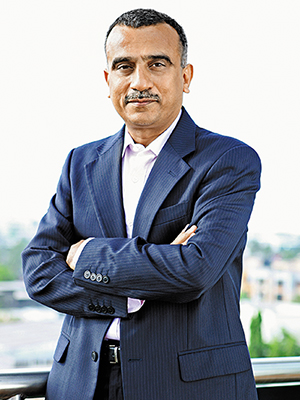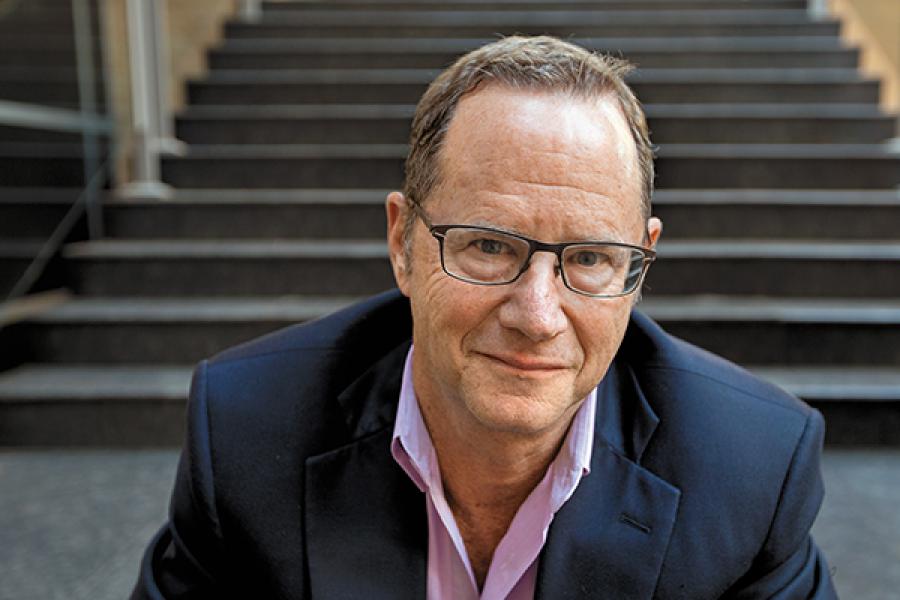
Everyone's riding the streaming wave
With a multiplicity of services on offer, video streaming players in India are set to face a problem of plenty, apart from the limitations of the country's digital infrastructure
Netflix entered India only on January 6 this year, when in a keynote address at the Consumer Electronics Show (CES) in Las Vegas, Reed Hastings Jr, co-founder and CEO of the company, announced the expansion of its on-demand video streaming service to 130 countries. That was in addition to the 60 nations where it already operated. But despite Netflix’s late entry into the country—almost a decade after it started streaming services in the US—the Indian consumer has long been familiar with Over-the-Top (OTT) services: The delivery of audio and video over the internet.
Frenzied entrepreneurial activity in the OTT video streaming space preceded Netflix with Times Internet-owned BoxTV, Zee Entertainment Enterprises Limited’s Ditto, Eros Now, Sony LIV and Star India’s Hotstar having tested the waters before. And it continues. Within just four months of Hastings’s announcement, the Indian OTT video space witnessed the launch of Viacom18’s (which is part of Network 18, the publisher of Forbes India) Voot, Zee Digital Convergence Ltd’s OZEE and Vuclip’s Viu.
Netflix’s India launch received its fair share of attention at a time when the video streaming ecosystem is taking shape in the country. “Competition is welcome,” says Rajiv Vaidya, CEO of Spuul, a video streaming service delivering Indian content. Vaidya insists that given the nascence of video streaming services in India, Netflix’s arrival will only add grease to the wheels of market expansion.
While that may be a given, video streaming services will have to navigate many hurdles in the road ahead, which includes the lack of adequate digital infrastructure. “India has not really defined what broadband is. The current definition is throttled and determined by telecom service providers,” explains Anand Agarwal, CEO of Sterlite Technologies, one of the country’s largest manufacturers of optic fibre cables. “While in most parts of the world broadband is defined to be in the order of 15-20 Mbps, in India broadband speeds are usually just a fraction of that at 0.5 Mbps,” he says.
India may be at the cusp of a transformation in this regard. The roll-out of 4G data services in the country is already under way. A recent report by brokerage firm Credit Lyonnais Securities Asia (CLSA) suggests that India’s 3G and 4G subscriber count will hit 300 million by 2018. While the likes of Bharti Airtel, Aircel and Vodafone have already completed certain phases of their roll-out, the forthcoming launch of Reliance Jio (Reliance Industries is the owner of Network 18, which publishes Forbes India) is expected to further improve the quality of internet connectivity. The drop in the prices of 4G-enabled handsets is viewed as another factor that may supplement the change that is ongoing. At the same time, given video content’s high propensity for data consumption, slow internet speeds are a reality OTT companies must contend with. “We work really hard on optimising the quality of streaming. Adaptive streaming allows Netflix to read a customer’s broadband connection speed and adjust the stream accordingly,” says Jonathan Friedland, Netflix’s chief communications officer.
Netflix is used to employing adaptive streaming. “It [broadband speed] is not any worse [in India] than in Brazil, Bolivia or El Salvador where we already provide services,” says Friedland. The company is also working on data compression, he adds. “We are doing a lot of work on complexity-based encoding.” This is essentially aimed at enabling streaming with lower data consumption, which is ideal for slow internet speeds.
In November 2015, the Internet And Mobile Association of India (IAMAI) estimated that India’s internet user base would hit 402 million by the end of that year. Of this, 117.34 million are broadband users, according to a report released by the Telecom Regulatory Authority of India (Trai) in October 2015. These numbers are, however, not representative of the number of video streaming consumers in India. According to research firm Media Partners Asia, there were 12 million video streaming subscribers in India in 2014, which was projected to reach 15 million in 2015. It also estimated the number to jump to 105 million by 2020.
Inadequate infrastructure development apart, an equally formidable challenge for companies in the OTT video space is the problem of plenty. “There is a multiplicity of OTT platforms today, each with different content, which creates a problem of discovery for them,” says Ashish Pherwani, head, advisory, media and entertainment, Ernst & Young.
How then do these services differentiate themselves? “It’s a matter of user experience, the consumer interface, and how we interact with the customer,” says Spuul’s Vaidya. “Content, at the end of it, is a function of capital.”
Content is central in the drive for differentiation. Services like Voot, Hotstar, OZEE, Sony LIV and Eros Now all have their unique content libraries thanks to the television and film content that they already own. These libraries give them a significant edge over their peers. While some players like Spuul currently do not have their own content, Vaidya points out that in future, large media conglomerates may be better inclined to sell their rights to an outside OTT player than to direct competitors.
“Over time, content from the studios of media conglomerates will be made available to aggregation services,” believes Nickhil Jakatdar, founder and CEO, Vuclip. “Even if you look at a market like the United States, Disney, Sony, everybody had their app, and yet the most popular ones are the aggregators Hulu and Netflix.”
In its journey from a mail-order DVD subscription service to the world’s largest internet TV network, Netflix has taken a number of seemingly risky bets. But perhaps its most important gamble in the recent past has been its push for original content. On the back of successful shows like Orange is the New Black and House of Cards, the company has now announced that it will be spending over $6 billion (around Rs 40,000 crore) on original content in 2016.
Many in India are following suit. Voot, besides the content from parent company Viacom18’s television and film divisions, also features original content. “Original content is an additional differentiator that we have brought in,” says Sudhanshu Vats, group CEO, Viacom18, referring to shows like Soadies, a show about a family obsessed with MTV India’s popular reality show Roadies. Hotstar has already incorporated a substantial amount of original programming on its platform. Almost every major streaming service already has original content or is in the process of creating it.
The revenue models that these services employ (subscription-based, advertising-based or a combination of free and premium content) also have a bearing on the content. Many video streaming services in India are currently based on the freemium model, which allows users free access to a limited section of the content and subscription to the rest. Subscription-only models, like Zee’s Ditto, are few. The arrival of the world’s largest subscription-based video streaming service offers another opportunity to see how the price-sensitive Indian market adopts the model.
“It [the subscription-based model] works on the principle that people will pay for content they can’t get elsewhere,” says Sameer Nair, group CEO, Balaji Telefilms. Nair’s company is preparing the launch of the production house’s digital offering, ALT Digital Media Entertainment Limited (ALT Digital). ALT Digital will offer content only through subscriptions and will feature only original content created by it. “Exclusive content created for an affluent market has scope, provided it is not available elsewhere, is compelling, and marketed well,” says Pherwani.
The subscription model also allows companies to look at content differently. “Our business model is not based on you watching a show at one point in time,” says Friedland. Netflix simply looks at the aggregate viewership of a show and how much they pay for it is decided by calculations done around that. Without the pressures that come with having to sell advertisements for particular slots, the company is free to bet on content that may ordinarily not have been broadcast. “It gives us enormous flexibility,” says Friedland. “In a simple sense, linear TV is broadcasting. We’re narrowcasting, to someone who would like a particular kind of show.”
Not all are convinced of the viability of the subscription-based model, though. “I feel India is some time away from that,” says Viacom18’s Vats, adding, “I don’t think viewership has reached the critical mass to drive a subscription-only model.” However, says Vats, the transition is around the corner. “I’ve been saying it is about 12-24 months away and we’ll continuously keep evaluating this.” Viacom18’s Voot is, for now, run on an advertisement-based model, but it may transition to a freemium model in the time to come, according to Vats.
Besides creating original content, on-demand video streaming services also face the challenge of tailoring movie and TV show recommendations to each user’s taste. Given the huge arsenal of shows and movies on its website, recommending the right content to every user is no mean feat. “If you ask most OTT providers how many hours of content they have on their platform, the answer will vary from 5,000 to 20,000 hours,” Vuclip’s Jakatdar points out. “When you have so much content, the good news is that you have a lot of content. The bad news is that you have a lot of content.”
The key to succeeding in India lies at the intersection of these challenges. While Netflix may not necessarily provide the best way forward in India, its global experiences help put India’s constantly evolving OTT video industry in perspective. As for its own expansion, the India launch is yet another gamble for the company. “We’ve learnt a lot by doing something that nobody’s done before,” says Friedland. And the same must apply to OTT players in India—till then, no one’s pulling the plug off their cable TV.
(This story appears in the 13 May, 2016 issue of Forbes India. To visit our Archives, click here.)

















